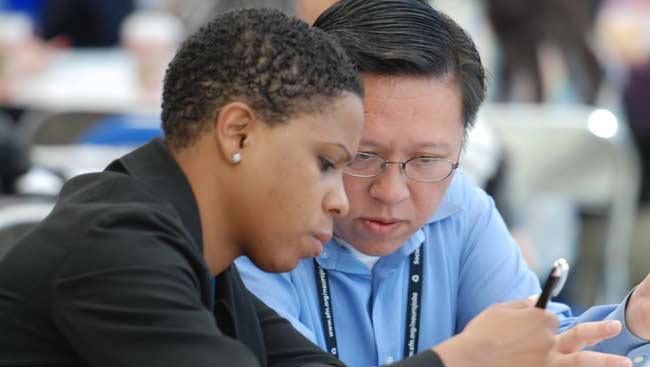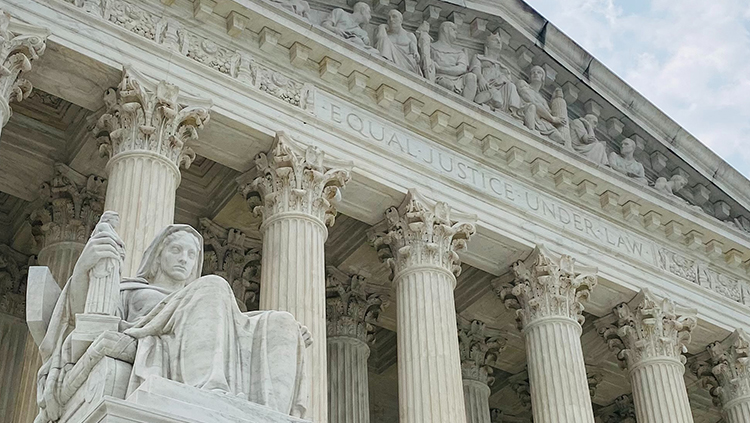
Recruitment of new faculty is a core activity of academic institutions, and diversity contributes to excellence in all professions, including academia. Recruitment is also a place where implicit bias — subtle discrimination based on cultural stereotypes — can seep into activities and decision-making. This is true in neuroscience and other science, technology, engineering, and mathematics (STEM) fields, where implicit bias has been well-documented. Although some institutions and department chairs are making good-faith efforts to hire more female and diverse faculty, the reality is that current recruitment processes result in flat growth, or worse, in reductions of the number of women and diverse candidates. The good news is that a growing body of evidence-based recruitment practices are paving the way for improved results.
Striving for greater diversity is important — and necessary. Research shows that diversity enhances problem solving and leads to more creative solutions. "Different groups present ideas differently and approach research with a different set of questions," explains one department chair. "Learning from diverse faculty offers students a richer academic experience."
The best ways to mitigate the impact of unintended biases in the hiring process is to raise awareness and to change policies and practices at the institutional level. The following sections describe changes that participants in the SfN IWiN program have made in their recruitment practices. They include making changes during each of the following steps in the process:
- Forming and educating search committees
- Conducting an open search
- Reviewing applications
- Interviewing candidates
- Making the offer
Forming and Educating Search Committees
The search committee should be diverse and include women and members of other underrepresented groups. Once the committee is in place, its members need to be educated about how deeply engrained implicit bias is in many aspects of the hiring process. A powerful way to make the case is by pointing to the research, which illustrates how implicit bias affects the ways applications are reviewed by both men and women; how letters of recommendation are written; the salaries being offered, and the mentoring opportunities available. These efforts aim to level the playing field from the onset of the process.
Here are some creative ways that IWiN participants are sharing this information:
- IWiN in Action: At the University of Buffalo (SUNY) School of Medicine and Biological Sciences, Margarita Dubocovich, professor and chair of pharmacology and toxicology and senior associate dean for Inclusion and Cultural Enhancement, and Barbara Burke, former director of the Office of Diversity and Inclusion, have initiated a series of dialogues with search committees for chairs and faculty. They have been making presentations about implicit bias and diversity — what it is, why it’s important for their institution, and what steps need to be taken in order for the school to become more diverse.
- IWiN in Action: The Ohio State University produced a short video describing the research on implicit bias, with colorful graphics to make the information compelling and easy to understand.
- IWiN in Action: Lehigh University is working on a multipronged approach. The team brought in a theatre group to reenact the recruitment process. This technique raised awareness and provoked conversation in the university community. Another tool being developed is a training module to educate search committee members about the recruitment process and provide evidence-based practices that would make it more equitable.
Conducting an Open Search
“Traditional” search processes may wind up creating “traditional” candidate pools. IWiN institutions are deploying several strategies to broaden the pool — and increase the number of applications from diverse and female candidates.
Cast a wide net: When starting an open search, the first rule is to cast a wide net. In addition to advertising with professional societies and within the university community, it’s also important to define the position in the widest possible terms consistent with the department’s needs. Finally, it’s important to be proactive: Seek out people you think are right for the job, even if they’re not actively looking.
- IWiN in Action: The search committee at the University of Buffalo successfully used this strategy to identify the best candidates for a new chair in the biochemistry department. The department found seven women and three men to interview. The three names submitted to the dean for final selection were all women. Since 2008, the university has hired nine chairs, about half of whom have been women.
Cluster hires: The concept of cluster hires is gaining traction at many institutions and has proven to be a way to increase diversity. Institutions following this practice make the decision to recruit for multiple positions in the same department simultaneously and to bring in more than one female and/or minority candidate to interview during each search. Interestingly, a 2005 study conducted by Jos van Ommerman and colleagues at Utrecht University in the Netherlands showed that when cluster hiring is done, the likelihood that a woman and/or minority will be hired increases proportionately.
Reviewing Applications
The most objective evaluations of application materials are those that are the most specific. A glance at a publications list or curriculum vitae is not enough. Instead, all committee members need to read each candidate’s publications and find out about their plans for future research, their teaching ability, and whether that individual has a track record as a conscientious member of his/her department and university. Using an evaluation form that provides a rubric for evaluating each of these areas is an effective way to keep the process unbiased.
- IWiN in Action: Lehigh University has found that using an evaluation matrix helps keep the review process on track and committee members focused and objective about the candidates.
Interviewing Candidates
Once the final candidates have been selected, they are usually invited to come to the campus to meet the faculty and learn more about the position. As mentioned earlier, bringing in more than one female or minority candidate has led to more diverse hires. Strategies for interviews include:
Conveying the institution’s commitment: Make sure applicants have an opportunity to meet a broad representation of faculty members — and to discuss the atmosphere on campus and whether, for example, it is family-friendly and receptive to all forms of diversity. An additional benefit of these practices is that they lead to greater transparency: with multiple people being hired at once, there is a greater chance that they will all receive the same salary and benefits, including mentoring opportunities.
Be aware of inappropriate questions: During the interview, faculty must be aware of what they can’t ask, as much as what they can. Experts in the field recommend focusing on the relevant qualifications of each applicant. While asking about family status is not allowed, informing applicants about family-friendly policies — and providing them with a packet of information — can and should be done by the institution’s Department of Human Resources. Knowing that an institution is concerned about issues facing dual-career families — and in some instances that it is willing to help the spouse find a job — can make the job more attractive to both male and female applicants.
- IWiN in Action: The Ohio State University convened a task force to study dual-career hiring and issued a report in 2012. The report called for university-wide policies — with common expectations and guidelines — on dual-career hiring and the formation of a support team to work with couples coming to the university. Ohio State is also committed to making this practice more widespread throughout the institution. For more information, check out the report at https://womensplace.osu.edu/sites/default/files/documents/2017/11/hiring_retention_2012.pdf.
Making a High-Quality Offer
By following these practices, a search committee is more likely to give equal weight to all the candidates and gain a diverse faculty. What can help seal the deal and increase diverse faculty?
The offer: The job will be even more appealing if the offer includes a reasonable salary, space and equipment for research, an equitable teaching load, minimal committee work at the onset of the appointment, and a mentoring plan.
- IWiN in Action: The University of Minnesota has met with success since incorporating some of these practices into their recruitment procedures. The university has hired 33 new faculty members who will be starting in the 2013-2014 school year. Of that number, 13 — almost 40 percent — are women. In the Department of Ecology, Evolution, and Behavior, eight new faculty members have been hired, six of whom have been women, over the past several years.
Recruitment is only one piece of the diversity puzzle. Retention practices, including evaluation for tenure, as well as the overall culture of the institution, play an important role in building a diverse academic community. Look for additional articles about these issues and the steps that are being taken to make these practices more equitable.
For further reading:
Page S. The Difference: How the Power of Diversity Creates Better Groups, Firms, Schools, and Societies. Princeton, NJ: Princeton University Press. 2007.
Correll S.F., Benard S., and Paik I. Getting a job: is there a motherhood penalty? American Journal of Sociology. 2007; 112 (5): 1297-1338.
Hewstone M. et al. Group processes & intergroup relations. 2006; 9(4): 509-532.
Huffcutt A.I. and Roth P.L. Racial group differences in employment interview applications. Journal of Applied Psychology. 1998; 83(2): 179-189.
Van Ommeren .J et al. Context in selection of men and women in hiring decisions: gender composition of the hiring pool. Psychological Reports. 2005; 96: 349-360.
Avoiding Bias in Reading and Writing Evaluations
McNeil L and Sher M. The dual career problem. Physics Today.1999; 32‐37.
ADVANCE Handbook for Faculty Searches and Hiring
University of Michigan ADVANCE
A chart of appropriate and inappropriate questions is available at http://hr.umich.edu/empserv/erecruit/department/referencedocuments/chart%20of%20legal%20questions.pdf.





